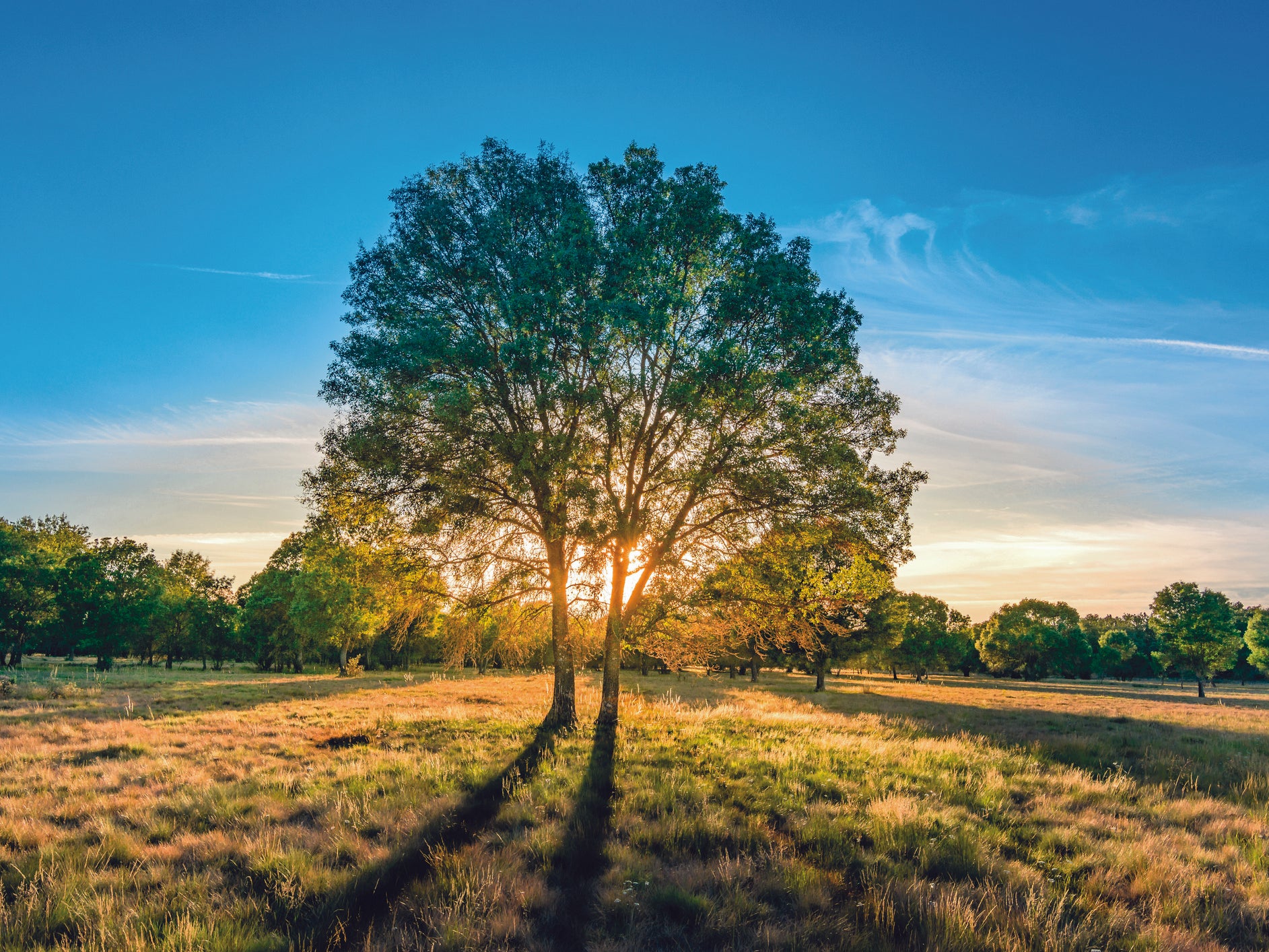Social distancing for trees? Ash dieback pandemic less deadly to isolated trees, study finds
Sparse spread in some areas and higher temperatures mean fungal disease isn’t wreaking devastation predicted for all populations of ash

The fungal disease affecting ash trees across the world has been estimated to be on course to kill 95 per cent of UK ash trees, and cost the economy up to £15bn.
But a glimmer of hope has emerged for the species after new research indicates these figures may have overstated the threat.
A study published in the British Ecological Society’s Journal of Ecology, which focused on trees in north-east France where the disease was first observed, has found ash dieback is far less severe than originally forecast.
The research team said this may be due to the “isolated conditions ash is often found in, such as forests with low ash density or in open canopies like hedges”.
“We found that the disease had spread to virtually all ash present in the studied landscape within two years. Nevertheless, in many areas ash trees remained relatively healthy” said lead author of the study Dr Benoit Marçais, of the French National Institute for Agriculture, Food, and Environment (INRAE).
Fighting climate change with trees: The facts
Show all 6“The view that only the most resistant part of the ash population, just a few percent of the individuals, will survive the ash dieback pandemic is wrong,” he said.
“We see that in many environments not favourable to ash dieback, the proportion of ash that remain healthy is closer to 80-95 per cent than to 5 per cent.”
But Dr Marçais added that the disease "may be locally very severe.”
As well as being further apart, isolated ash trees or those in open canopies tended to have higher crown temperatures than those in shaded forests, the research team said. This is less favourable for the development of the fungal pathogen that causes ash dieback, Hymenoscyphus fraxineus.
High summer temperatures, even in temperate climates like north-eastern France, could further help to reduce the severity of the disease. Over 35C the disease cannot survive at all.
For this reason, one of the impacts of the climate crisis could be to help extinguish the threat of ash dieback in some areas, however, the wider impacts of global warming would be negative and devastating to numerous vulnerable ecosystems.
The scientists suggest reducing the density of threatened tree species by promoting diversity of species in forests could be a valuable strategy in limiting vulnerability to invasive pathogens like ash dieback.
With these kinds of invasive pathogens occurring more frequently, mixed forests may offer protection without the need to target specific pathogens.
Ash dieback, Hymenoscyphus fraxineus, originated in Asia and was reported in Poland in the 1990s, it then reached France in 2008 and the UK four years later.
The fungal spores infect leaves in the summer before moving to the stem, causing shoot mortality and crown dieback. The fungus survives the winter in leaves in the forest litter before spores are released again in summer. This makes dense stands of ash trees with closed canopies highly susceptible to the fungus.
To understand the impact of landscape on the severity of ash dieback, the researchers performed a landscape survey on a 22km2 area around the village of Champenoux in north-eastern France shortly after the disease arrived, with further surveys taking place annually.
Using 25-metre plots around the study area, the researchers recorded the presence of ash trees and ash dieback, with samples tested for Hymenoscyphus fraxineus.
Dr Marçais cautions that this research applies to the climatic context of north-eastern France. “We show that the low impact of ash dieback in trees isolated or in hedges is partly linked to high crown temperature during heat waves. In more oceanic climates like northern and western France or Great Britain, this might not be as prominent.”
The researchers are looking to further explore the impacts of climate: “We are working on how climate affects ash dieback risk. We have already shown that in south-eastern France, ash dieback will have very little impact because of high summer temperature,” Dr Marçais said.
Subscribe to Independent Premium to bookmark this article
Want to bookmark your favourite articles and stories to read or reference later? Start your Independent Premium subscription today.

Join our commenting forum
Join thought-provoking conversations, follow other Independent readers and see their replies